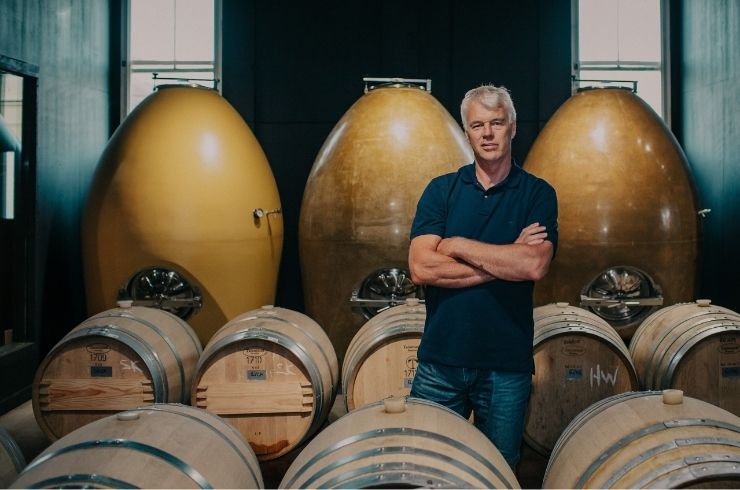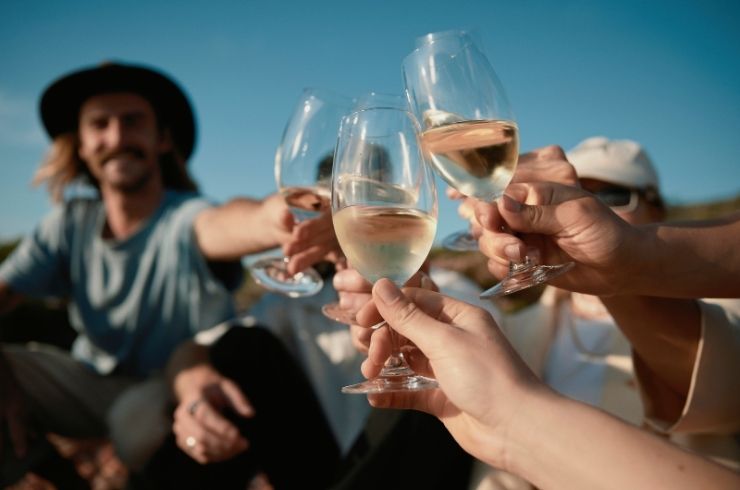Disclaimer: I wish it to be known I have written this year’s Top 100 without any knowledge of any of the advertising placed in conjunction with this article by retailers, wineries, or any other wine-related business.
The selection process may seem to lack transparency or consistency, but it’s a long journey that takes into account value for money as a starting point. It’s not just the points (as it is in a wine show) and the price is very nearly as important. Then there is the need to balance the number of wines in the varietal group: shiraz and chardonnay respectively could provide enough selections for the total of 80 wines in the table-wine quadrant if I didn’t intervene.
But it doesn’t stop there. Rosés and pinot noirs under $25 more often than not don’t put pressure on the scoreboard. This year they did; moreover, the three pinots were $20 (read $19.99) or $16. These and the four pinots in the over-$25 segment (ranging between $70 and $95) point to the happy place Australian pinot noir is in. Greater vine age, better management of canopies, hands-free bunch and berry selection (move over Tesla), improved methods of fermentation and use of oak are all factors in the ever-increasing quality of pinot noir. Mind you, 2015 was a superb pinot vintage in southern Victoria – an astonishing 11 gold medals were awarded to the 2015 pinots in the 2016 Yarra Valley Wine Show.
Five of the seven shiraz wines under $25 were from cool regions, leaving one each from the Barossa Valley and McLaren Vale to defend the traditional warm areas. This situation was reversed in the over-$25 category seven to three, albeit with the Hunter Valley’s best vintage since 1965 (2014) metaphorically joining hands with the long-awaited releases from Penfolds. These included the 2012 Grange and 2014 RWT Bin 798 Barossa Shiraz, the latter with a Bin number for the first time and each with bottle numbers to help fight against fraud in China.
The link between region and variety continued with the cabernets and cabernet blends, Margaret River providing six of the 10 wines, the Great Southern of Western Australia with three selections, the sole contributor from the eastern states, the Yarra Valley, preventing a clean sweep of Western Australian wines.
It will be obvious that there is no handicap system in place when it comes to the choice of regions. One feature of Australian wine not understood by European observers is that there is a strong correlation between variety and place. Since I am selecting on quality and value for money it means that regions stand or fall on their own merits.
So, the white wines follow a similar path to that of the red wines, but in so doing show a continuation in the challenge being thrown down to the primacy of the Clare and Eden Valleys by rieslings from much cooler regions. Only one of the five over-$20 rieslings came from the Clare Valley (Grosset, of course), although the under-$20 group restored some semblance of order with three of the four coming from the Clare and Eden Valleys. Bear in mind that this is no more or less a struggle between first and second place.
Semillon was a lay-down misere, with a 100 per cent strike rate to the Hunter Valley, and on the other side of the continent Margaret River shredding the opposing semillon-sauvignon blends in usual fashion. Adelaide Hills got its nose in with the inevitable Shaw + Smith and bargain basement Mike Press sauvignon blancs.
When it came down to chardonnay, almost always a tight contest between the Yarra Valley and Margaret River, it was time for the Yarra Valley to gracefully step back and admit defeat on a six-to-three score line. Chardonnay is generally accepted as the most exciting place to be (if you are not in politics) by both local observers and international heavyweights, most notably Jancis Robinson, the most influential wine writer in the English-speaking world. We are picking the grapes at the right time, ensuring a good level of natural acidity and not exceeding 13.5 per cent alcohol; only using malolactic fermentation when it is necessary to reduce acidity, using less new oak and moving to larger format barrels. It’s all working a charm.
Finally, for those hankering for alternative varieties, there is an eclectic McLaren Vale grenache mataro graciano and four interesting white varietals: marsanne, verdelho, pinot gris and fiano.
It's been quite a year
The record number of wines entered this year increased my hand wringing as I sought to make choices between wines of near-identical entitlement. Not that this exercise is entirely new: last year’s clamour of red wines over $20 led to this year’s change to a $25 barrier in a partially successful attempt to even up the starting numbers for each group. The same change will need to be made for white wines next year.The selection process may seem to lack transparency or consistency, but it’s a long journey that takes into account value for money as a starting point. It’s not just the points (as it is in a wine show) and the price is very nearly as important. Then there is the need to balance the number of wines in the varietal group: shiraz and chardonnay respectively could provide enough selections for the total of 80 wines in the table-wine quadrant if I didn’t intervene.
But it doesn’t stop there. Rosés and pinot noirs under $25 more often than not don’t put pressure on the scoreboard. This year they did; moreover, the three pinots were $20 (read $19.99) or $16. These and the four pinots in the over-$25 segment (ranging between $70 and $95) point to the happy place Australian pinot noir is in. Greater vine age, better management of canopies, hands-free bunch and berry selection (move over Tesla), improved methods of fermentation and use of oak are all factors in the ever-increasing quality of pinot noir. Mind you, 2015 was a superb pinot vintage in southern Victoria – an astonishing 11 gold medals were awarded to the 2015 pinots in the 2016 Yarra Valley Wine Show.
Five of the seven shiraz wines under $25 were from cool regions, leaving one each from the Barossa Valley and McLaren Vale to defend the traditional warm areas. This situation was reversed in the over-$25 category seven to three, albeit with the Hunter Valley’s best vintage since 1965 (2014) metaphorically joining hands with the long-awaited releases from Penfolds. These included the 2012 Grange and 2014 RWT Bin 798 Barossa Shiraz, the latter with a Bin number for the first time and each with bottle numbers to help fight against fraud in China.
The link between region and variety continued with the cabernets and cabernet blends, Margaret River providing six of the 10 wines, the Great Southern of Western Australia with three selections, the sole contributor from the eastern states, the Yarra Valley, preventing a clean sweep of Western Australian wines.
It will be obvious that there is no handicap system in place when it comes to the choice of regions. One feature of Australian wine not understood by European observers is that there is a strong correlation between variety and place. Since I am selecting on quality and value for money it means that regions stand or fall on their own merits.
So, the white wines follow a similar path to that of the red wines, but in so doing show a continuation in the challenge being thrown down to the primacy of the Clare and Eden Valleys by rieslings from much cooler regions. Only one of the five over-$20 rieslings came from the Clare Valley (Grosset, of course), although the under-$20 group restored some semblance of order with three of the four coming from the Clare and Eden Valleys. Bear in mind that this is no more or less a struggle between first and second place.
Semillon was a lay-down misere, with a 100 per cent strike rate to the Hunter Valley, and on the other side of the continent Margaret River shredding the opposing semillon-sauvignon blends in usual fashion. Adelaide Hills got its nose in with the inevitable Shaw + Smith and bargain basement Mike Press sauvignon blancs.
When it came down to chardonnay, almost always a tight contest between the Yarra Valley and Margaret River, it was time for the Yarra Valley to gracefully step back and admit defeat on a six-to-three score line. Chardonnay is generally accepted as the most exciting place to be (if you are not in politics) by both local observers and international heavyweights, most notably Jancis Robinson, the most influential wine writer in the English-speaking world. We are picking the grapes at the right time, ensuring a good level of natural acidity and not exceeding 13.5 per cent alcohol; only using malolactic fermentation when it is necessary to reduce acidity, using less new oak and moving to larger format barrels. It’s all working a charm.
Finally, for those hankering for alternative varieties, there is an eclectic McLaren Vale grenache mataro graciano and four interesting white varietals: marsanne, verdelho, pinot gris and fiano.



